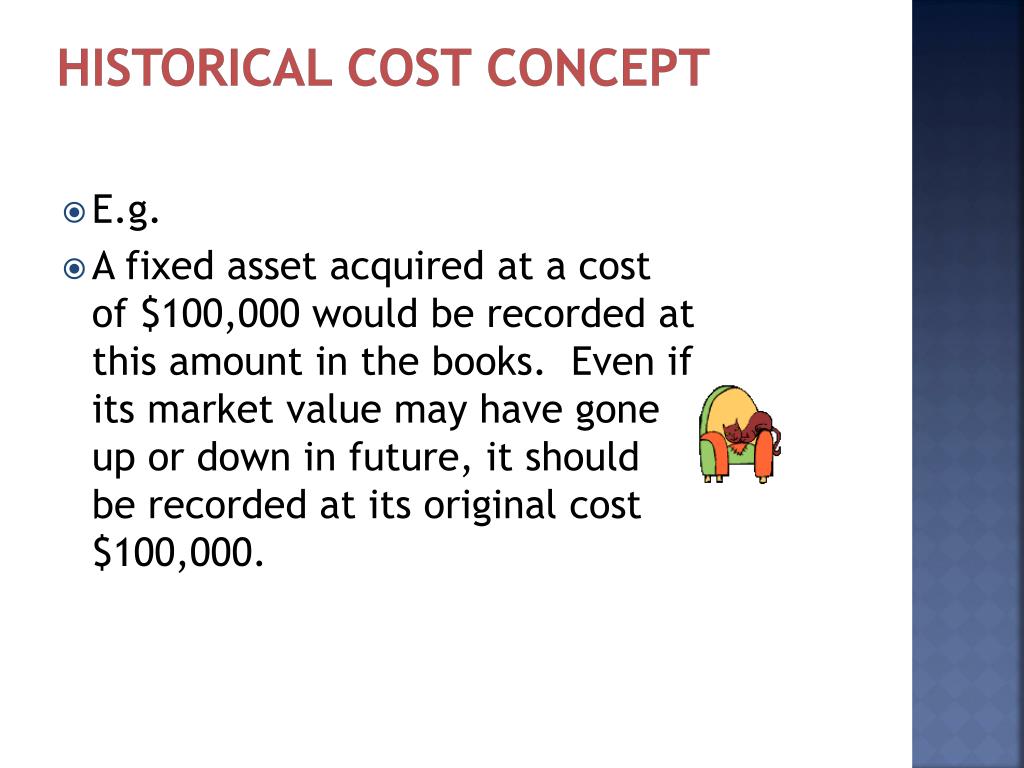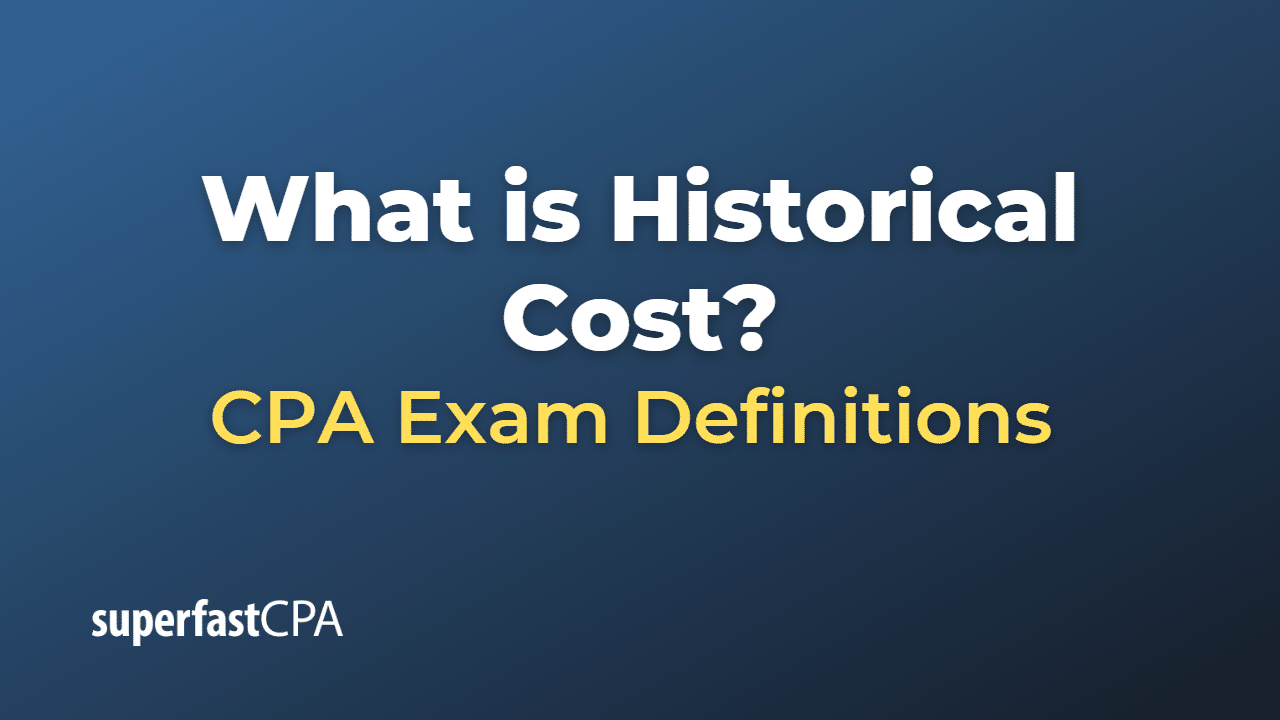
The cost principle is a standard a guideline used by accountants around the world and is part of the GAAP conceptual framework. It ensures that all the information being displayed on a company’s financial statements regarding the value of any asset, equity, or liability reflects the reality of the underlying transactions. The original price can include any asset and all costs related to its acquisition.
Non-disclosure of a company’s current worth

When sharp, unpredictable volatility in prices occurs, mark-to-market accounting proves to be inaccurate. In contrast, with historical cost accounting, the costs remain steady, which can prove to be a more accurate gauge of worth in the long run. Historical cost accounting and mark-to-market, or fair value, accounting are two methods used to record the price or value of an asset. Historical cost measures the value of the original cost of an asset, whereas mark-to-market measures the current market value of the asset. For tax purposes, the IRS uses a term called « basis » for business assets as the actual cost of property. The cost includes expenses connected with the purchase, like sales tax, setup, delivery, installation, and testing.
AccountingTools
However, it does not need to be reported in the balance sheet in the case of marketable securities which are recorded with their fair value. On the other hand, impaired intangible assets can be recorded from historical to current value. Valuing assets at historical cost prevents overstating an asset’s value when asset appreciation may be the result of volatile market conditions. The asset would still be recorded on the balance sheet at $100,000 if a company’s main headquarters, including the land and building, was purchased for $100,000 in 1925 and its current expected market value is $20 million.
- The historical cost principle sometimes called the « cost principle, » implies that asset values on balance sheets must reflect the original cost price.
- If an asset belongs to a frequently fluctuating market, you might need to look at its fair market value.
- Nevertheless, the wear and tear expenses that come with using long-term assets mean that certain modifications must be made.
- This allows for a more accurate representation of what the company would receive if the assets were sold immediately and it’s useful for highly liquid assets.
- Depreciation helps you offset the value of an asset over time on your tax return.
Which of these is most important for your financial advisor to have?
Mark-to-market is dependent on a larger set of factors, such as demand, supply, perishability, and duration of asset holding by the company. Indeed, the historical cost principle is inaccurate absorption costing and variable costing explained for deducing accounting estimates where inflation is a factor. Nevertheless, it remains valuable for businesses as it provides an objective and consistent basis for asset valuation.
Historical Cost Concept
Most assets are to be recorded on the balance sheet at their historical cost under the historical cost principle even if they’ve significantly increased in value over time. For accounting purposes, assets change in cost through depreciation or amortization. The rate of change is set by accounting standards and is recorded in the business’s balance sheet. To record a change, the historical cost is stated first, then the accumulated amount of depreciation/amortization for the period is shown, with book value at the end of the accounting period shown. The exception to historical cost is used for financial instruments like stocks and bonds, which are usually recorded at their fair market value.
This is because the historical cost does not make any price adjustment for effects linked to inflation and depreciation. As such, one cannot get a fair market value for the company by calculating the historical cost of its assets and liabilities. The historical cost principle is a conservative accounting principle that stipulates that the recording of asset values on a company’s balance sheet must be the same as the original cost at the date of purchase.
Subsequently, the balance sheet must show the asset’s historical cost less accumulated yearly depreciation. Historical Cost Convention does not apply to certain types of assets such as financial instruments (e.g. cash, trade receivables, investment in shares). Its importance lies in providing consistency and reliability in financial reporting, which helps stakeholders make informed decisions.
It’s sometimes called mark to market accounting because it values an asset at current market value. Mark-to-market accounting differs from historical cost accounting in valuing liabilities and assets using current market prices rather than original prices. This makes it the appropriate accounting standard for derivatives such as futures and options contracts.
For instance, marketable securities are recorded at fair market value on the balance sheet, but defective intangible assets are depreciated from their historical cost to their current value. Under generally accepted accounting principles (GAAP) in the United States, the historical cost principle accounts for the assets on a company’s balance sheet based on the amount of capital spent to buy them. This method is based on a company’s past transactions and is conservative, easy to calculate, and reliable.
